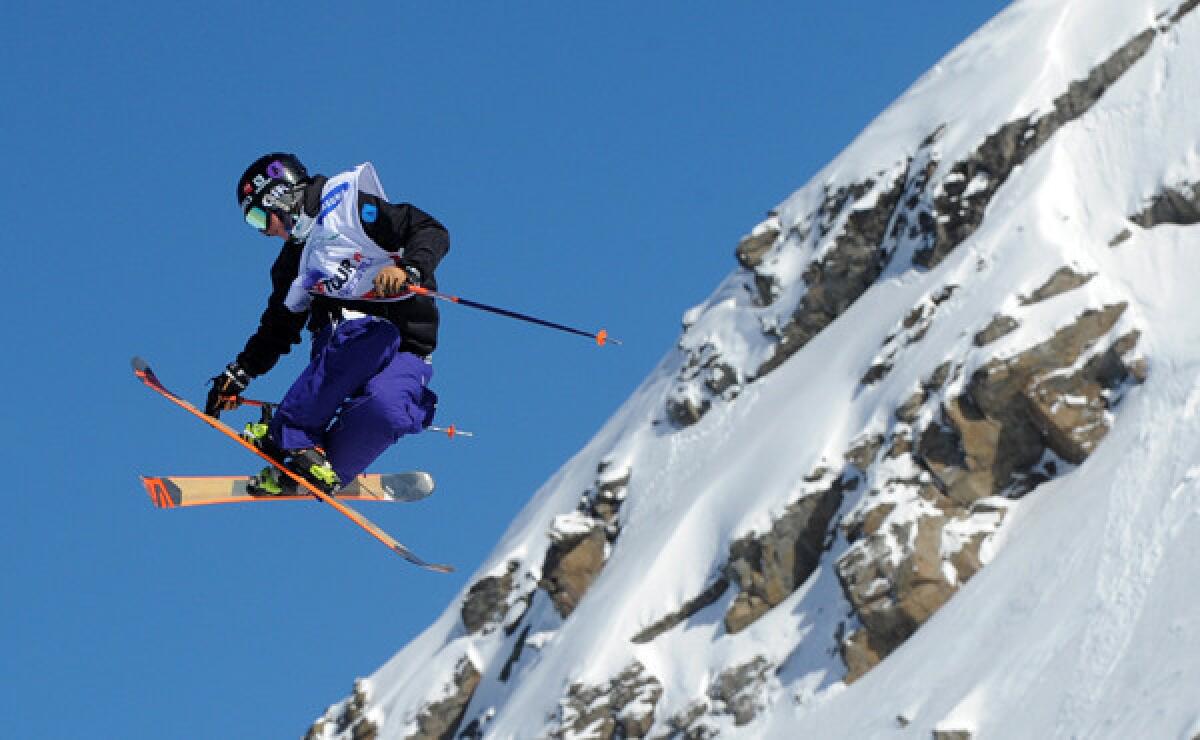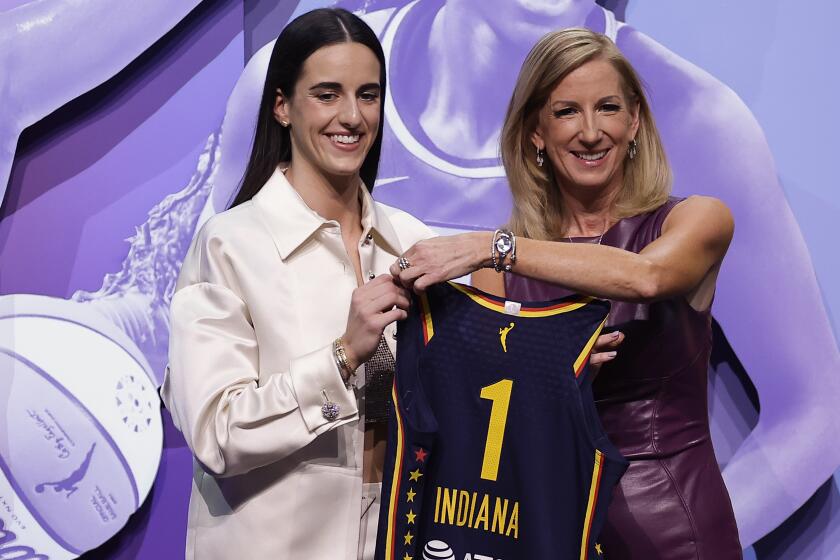Sochi Winter Olympics seeks sizzle with new events

The luge seemed tough enough already.
Racing down an icy track at 80-plus mph. Flying through twists and turns on your back.
Now the Olympics have added one more challenge.
In the new mixed relay — each country racing a man, woman and doubles team, one right after the other — sliders must look up and slap a touchpad as they zip across the finish line.
“The last thing you want to do is miss the pad,” U.S. luger Erin Hamlin said. “That would be devastating.”
The luge relay will not be the only newcomer at the 2014 Sochi Games. The International Olympic Committee has expanded the program to historic proportions with a dozen events making their debut in Russia.
Biathlon will get a mixed relay of its own, figure skating will have a team competition and women can finally show their stuff in ski jumping.
But the biggest expansion will take place in the action sports of snowboarding and freeskiing, with the Games hoping to add more sizzle.
Scott Blackmun, chief executive of the U.S. Olympic Committee, said it is all about luring “a younger audience.” New events include:
Freeskiing
Competitive freeskiing has grown steadily since the 1990s. The rebellious sport combines downhill speed with daring tricks off rails, boxes and jumps.
At the Games, freeskiers will compete in two events.
The halfpipe will greatly resemble its snowboard cousin as competitors launch themselves off the pipe’s sheer walls, doing flips and spins to earn points.
The ski slopestyle event is more complex with a downhill course that has three “jib areas” — the rail features — and three jumps. Judges score on style, technique and big air. “You’re like, oh, are they going to land it?” U.S. team member Devin Logan said. “You’re on your toes the whole time.”
Freeskiers know that, as the new kids on the block, they will be under the microscope.
“Not only am I competing for myself and for my country, I’m also competing for my sport,” Gus Kenworthy said. “I’m hoping that when we introduce it to the Olympics, people will be excited.”
Snowboarding
The Olympic trend toward youth actually began with the addition of the snowboard halfpipe in 1998. That event quickly became a marquee attraction, so the IOC wants more.
The parallel slalom takes its cue from skiing, but adds a twist. Riders race side by side, two at a time, zigzagging down a tight course marked by gates and flags.
Slopestyle has a more artistic vibe as competitors string together tricks on those rails and jumps.
The increase in action sports could boost the U.S. medal count because North American resorts have been building terrain parks for years. “We’re taking an outstanding team to Sochi,” said Mike Jankowski, one of the U.S. coaches.
Figure skating team event
Each country enters six skaters — a man, a woman, a pairs team and an ice dance couple. Points are awarded for each routine and the team with the highest total wins.
The tricky part is timing. The team competition comes early in the Games and skaters may want to save something for their specific events. The pairs, in particular, start two days later.
“It’s going to be an interesting strategy,” said gold-medal winner Scott Hamilton, who will be a television analyst in Sochi. “How much will they have left in the tank?”
Women’s ski jumping
It took years of pleading, pestering and arguing in court for women jumpers to gain access to the Olympics.
They will be scored on distance and technique, just like the men. But they will jump on only the normal hill, instead of both the normal and large.
U.S. team member Jessica Jerome understands that her sport is an underdog.
“People love alpine skiing because it’s something they can do,” she said. “Ski jumping is more specialized. It’s not hobby friendly, so I get that it’s tough for people to relate to.”
Biathlon mixed relay
Each team has two men and two women racing one at a time, skiing cross-country and stopping to shoot in both the prone and standing positions.
The women go first on a 6-kilometer course, followed by the men on a 7.5-km course.
Any competitor who misses too many targets must ski 150-meter penalty loops. Fastest team across the finish line wins.
Luge team relay
The clock starts the moment the first luger leaves the gate up top. When he or she hits the touchpad at the bottom, the gate opens for the next racer to go.
The teams can proceed in any order and the doubles sled can have two men, two women or a mixed pair. Fastest total time gets the gold medal.
The relay has already earned a reputation for unpredictability so — like other new events in Sochi — it might hit a few snags. When the U.S. team practiced this fall, there were problems with the special gloves that lugers wear for their push start.
The touchpad, Hamlin said, “is really just rubber material and we do wear spikes on our gloves, so there have been instances of pads getting ripped in half and very sore hands. It should be interesting.”
Twitter: @LATimesWharton
More to Read
Get our high school sports newsletter
Prep Rally is devoted to the SoCal high school sports experience, bringing you scores, stories and a behind-the-scenes look at what makes prep sports so popular.
You may occasionally receive promotional content from the Los Angeles Times.







